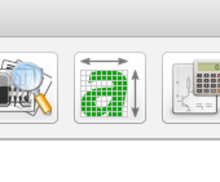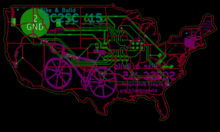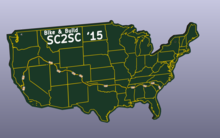World's worst RNG.
By Ben Nitkin on
I've been working on a USA medallion recently, and wanted to add a flickering effect. Something to make the lights twinkle randomly. That's not too hard on a real PC, where resources are cheap. But the ATTiny 44 I'm working on has only 128 bytes of ram. (That's 1/8th of a kilobyte, which is 1/1000th of a megabyte, which is itself 1/1000th of a gigabyte, which is what your computer has.)
Most of the RNG's around need 4 bytes or so for storage, and more for calculation. Mine doesn't! (It's also not very random, but you can't have everything for free.)




